Understanding light sources Worksheets for Ages 7-8
6 filtered results
-
From - To
Discover our engaging "Understanding Light Sources Worksheets" designed specifically for children aged 7-8! These worksheets offer young learners an exciting opportunity to explore the different types of light sources in our world. Through a variety of interactive activities, kids will identify natural and artificial light sources, enhancing their understanding of how light affects our environment. Designed to promote critical thinking and encourage creativity, these resources align with educational standards and make learning fun. Perfect for teachers and parents alike, our worksheets will spark curiosity and deepen children’s knowledge about the essential role of light in their everyday lives.
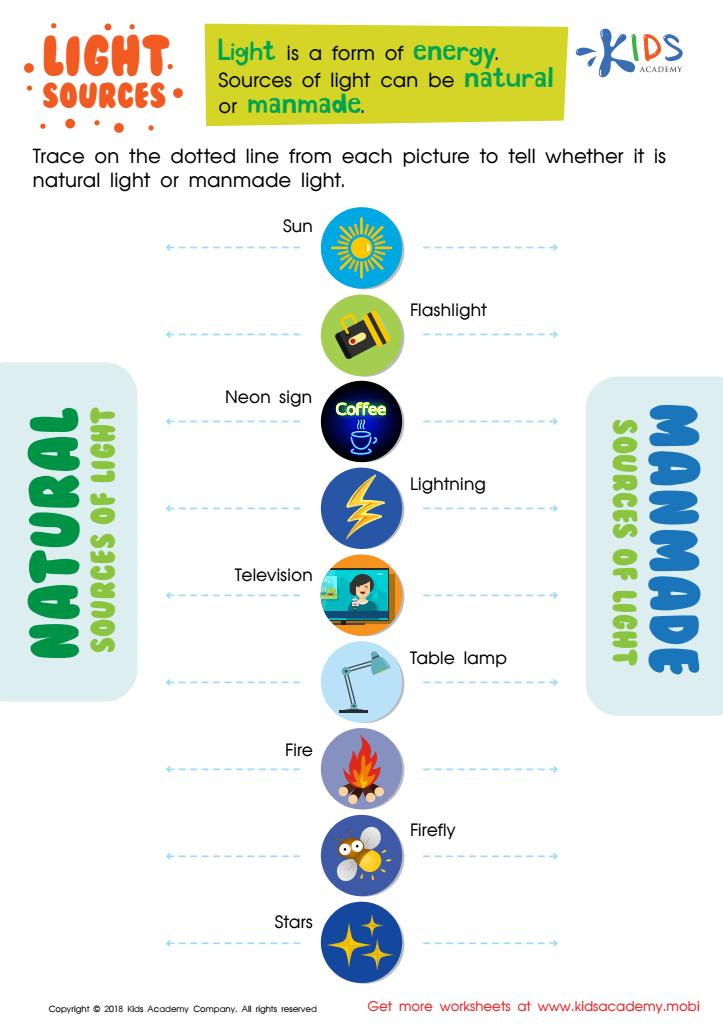

Natural and Manmade Light Sources Worksheet
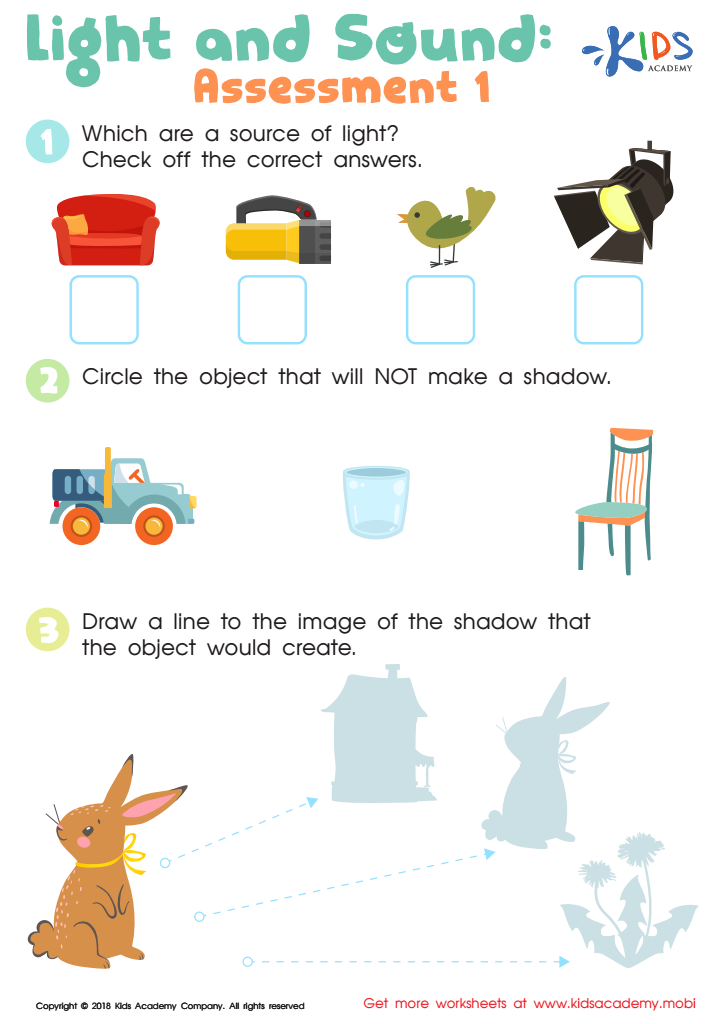

Light and Sound: Assessment 1 Worksheet
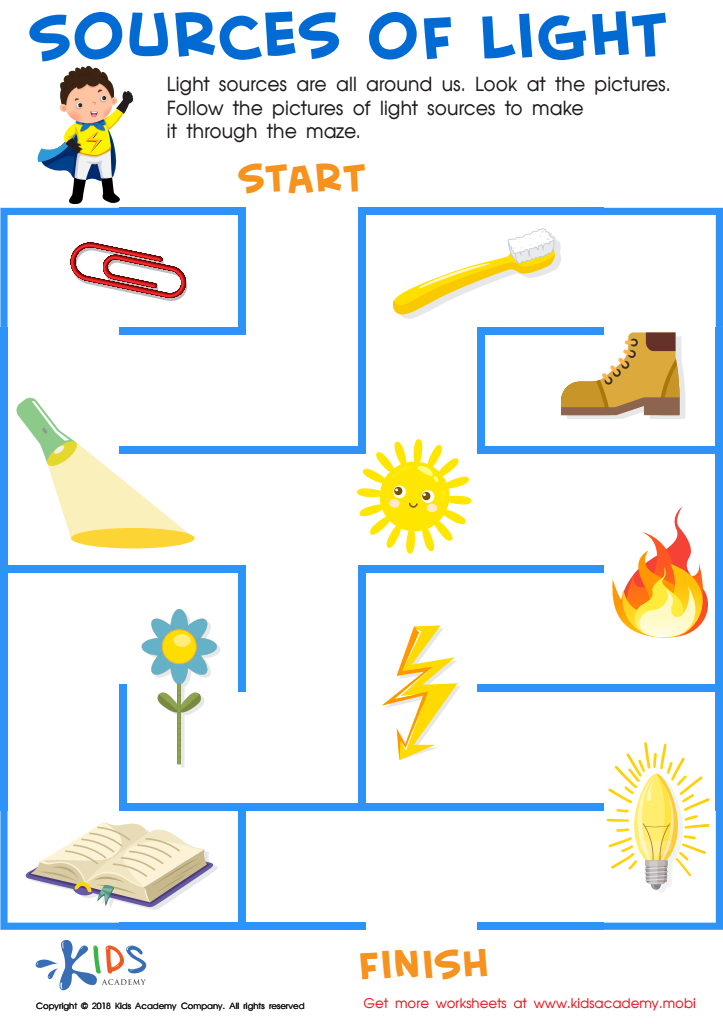

Sources of Light Worksheet
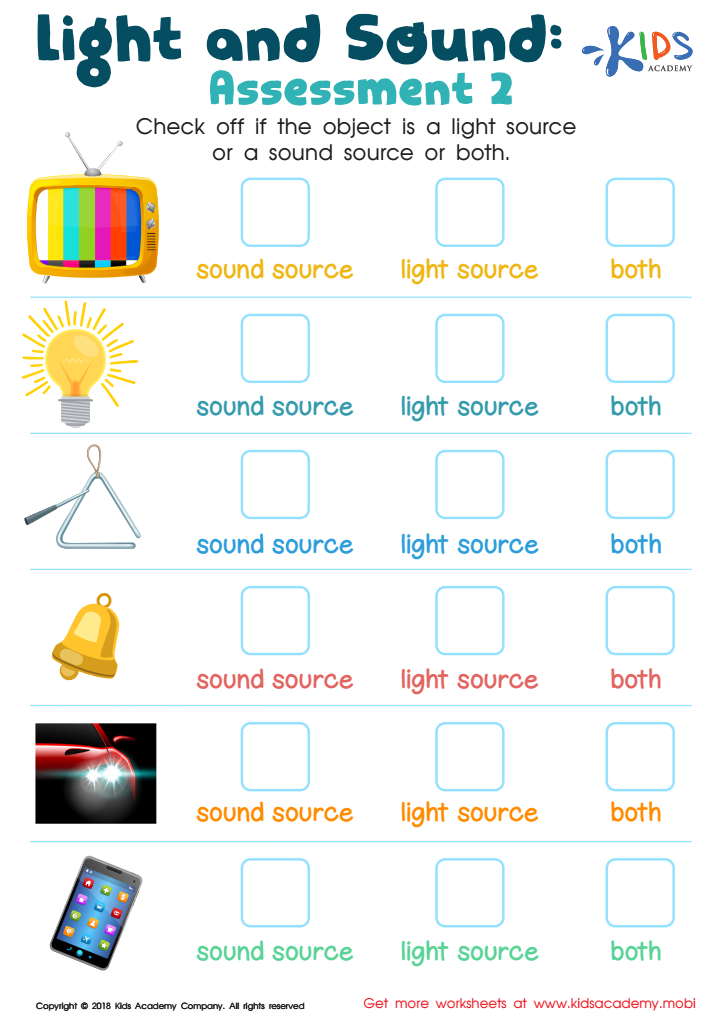

Light and Sound: Assessment 2 Worksheet
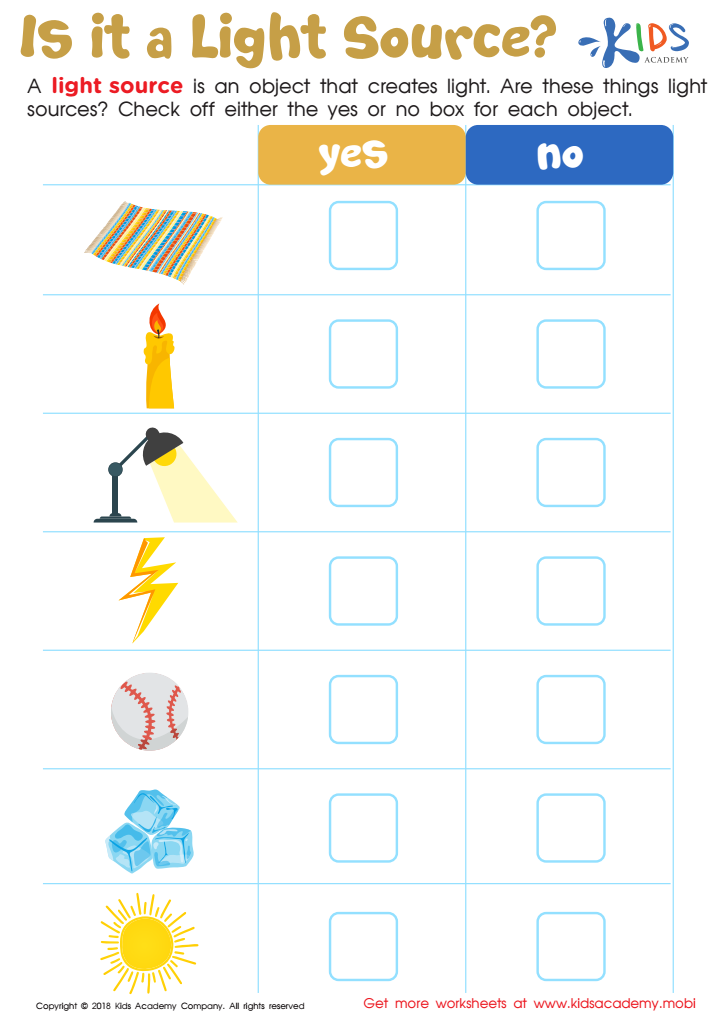

Is It a Light Source? Worksheet
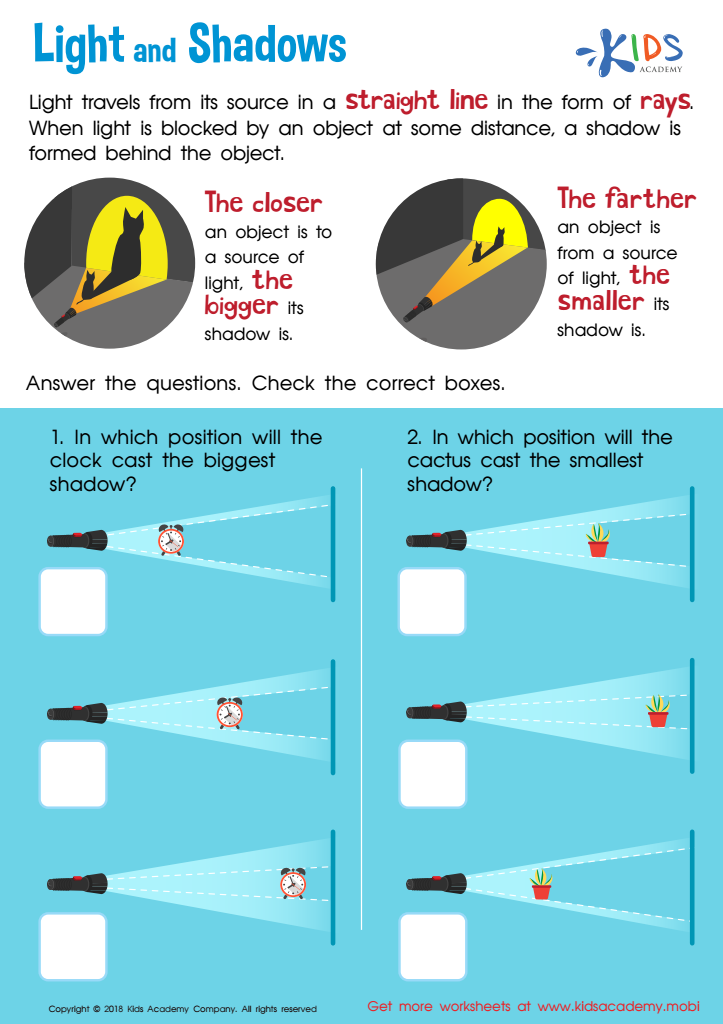

Light and Shadow Worksheet for Grade 3
Understanding light sources is essential for children aged 7-8 as it forms the foundation of scientific inquiry and critical thinking. At this age, children are naturally curious and eager to explore the world around them. Learning about different light sources, such as the sun, bulbs, and fire, fosters their observation and reasoning skills, helping them make connections between the scientific concepts and their daily lives.
Moreover, understanding light sources is crucial for safety. By recognizing that not all light sources are safe or suitable for indoor use, children learn to make better decisions regarding their environment. For instance, teaching them about the dangers of using candles unsupervised instills responsibility and awareness.
Additionally, incorporating light source education into the curriculum can enhance creativity. Children can engage in hands-on activities that encourage experimentation, leading to a deeper interest in science and technology. It nurtures a sense of discovery, empowering students to ask questions and seek answers.
Ultimately, teaching children about light sources enriches their educational experience, laying the groundwork for future scientific learning while blending knowledge with safety, creativity, and environmental awareness. Parents and teachers should prioritize this topic to support well-rounded development in young learners.
 Assign to My Students
Assign to My Students




.jpg)











